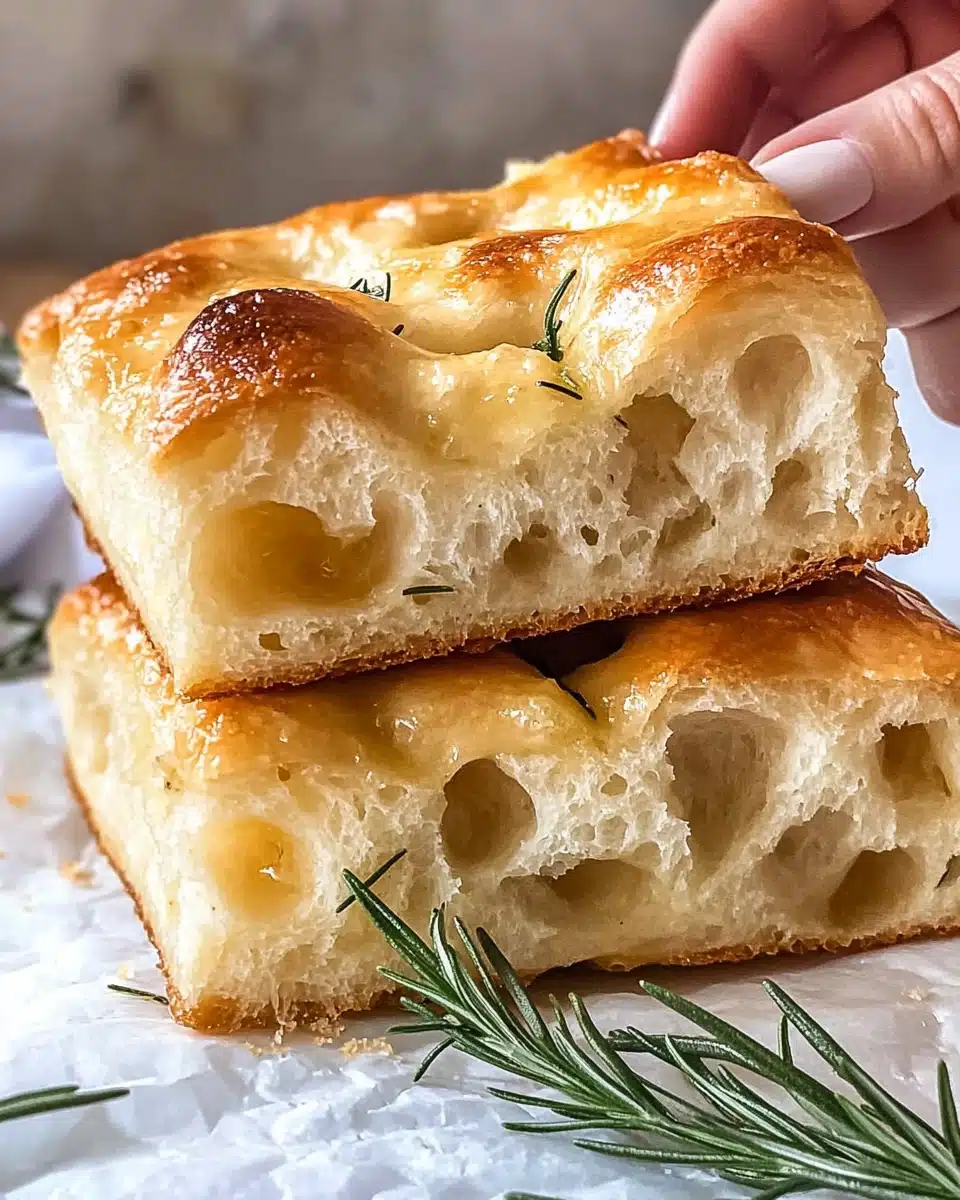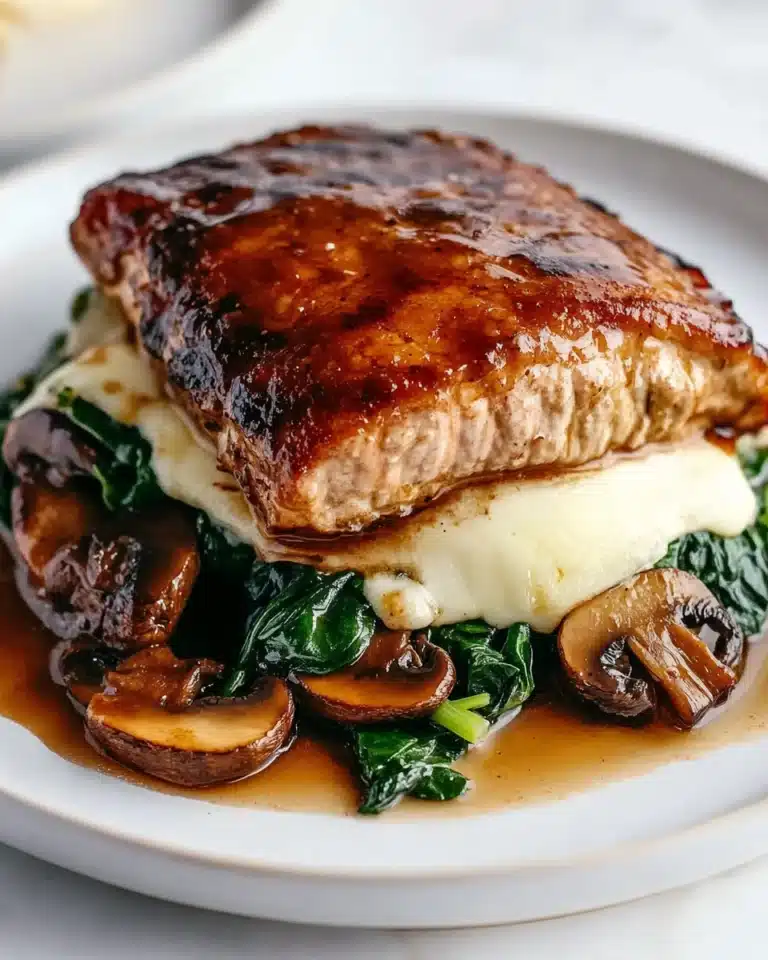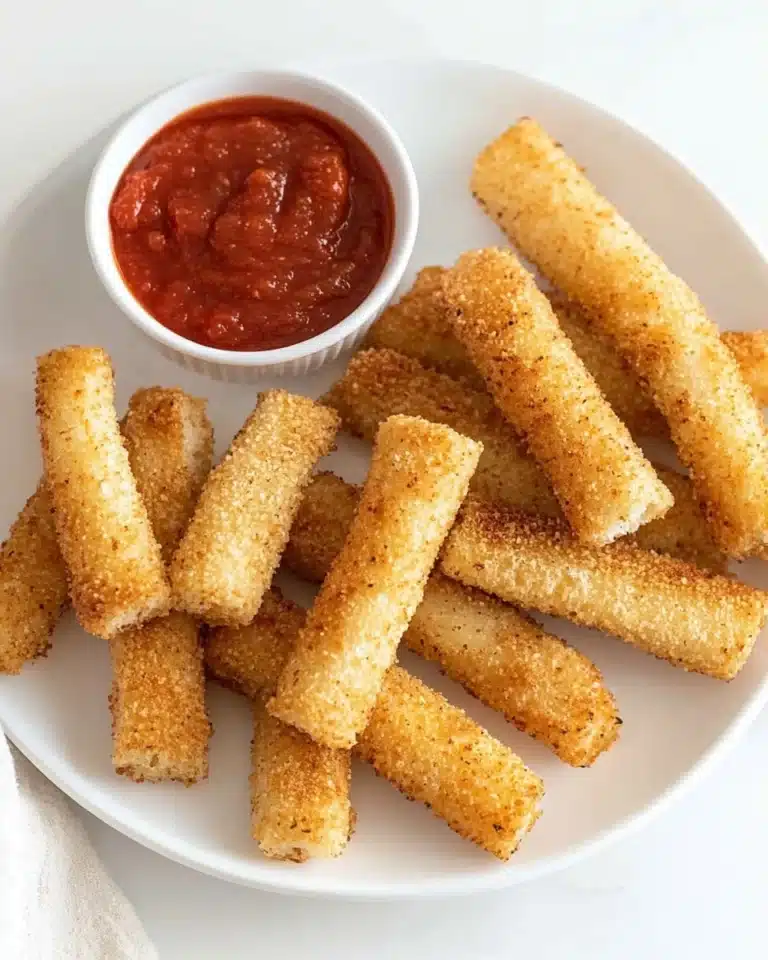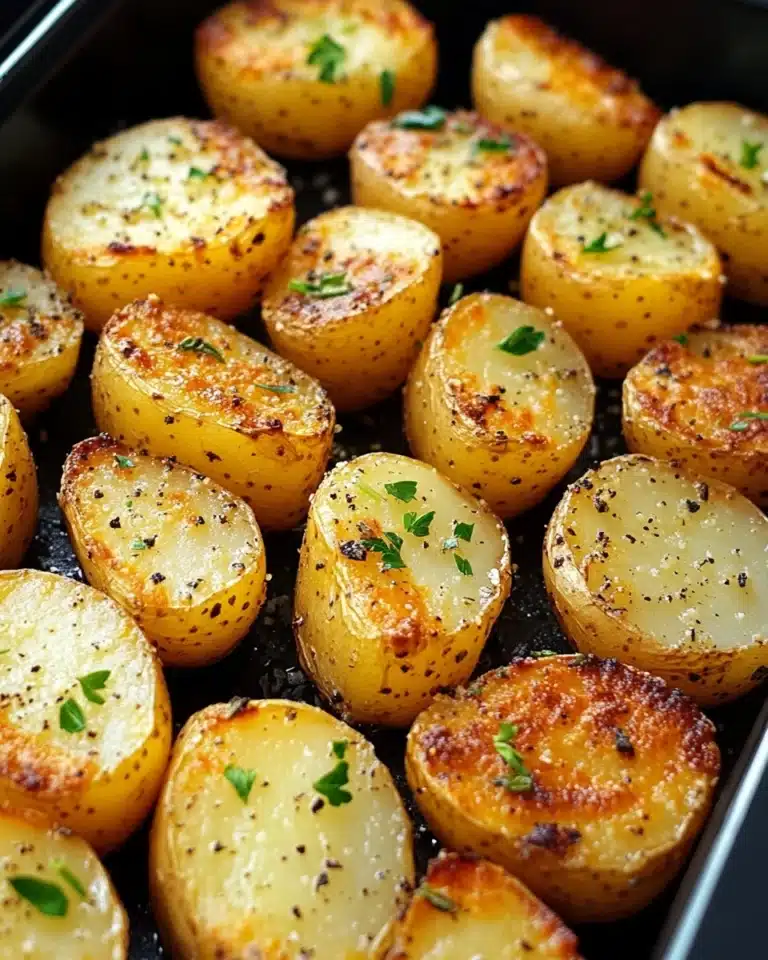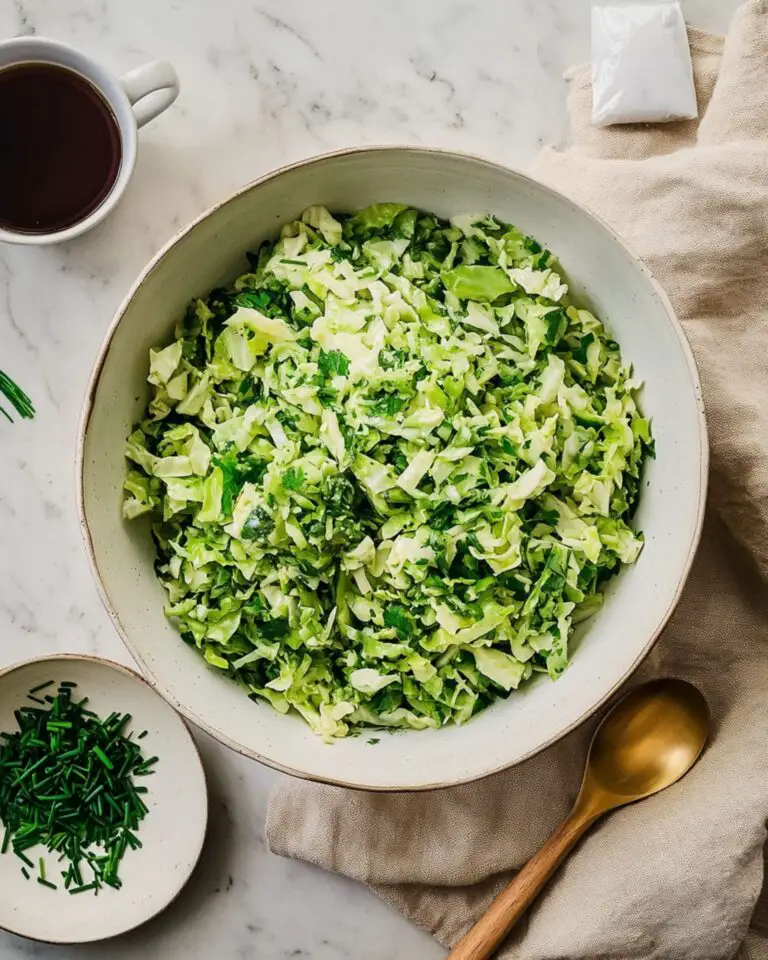If you’ve ever dreamed of pulling a warm, olive oil–drenched loaf of Dimpled Rosemary Focaccia from your oven, prepare to fall in love. This Italian classic features a golden, slightly crisp crust, with pillowy pockets inside and a fragrant topping that perfumes your entire kitchen.
Why You’ll Love This Recipe
- Unbeatable Texture: Every square of Dimpled Rosemary Focaccia is perfectly golden outside, but impossibly soft and chewy inside.
- Incredible Aroma: Imagine your home filled with the intoxicating scent of fresh-baked bread and rosemary—it’s downright irresistible!
- Totally Versatile: This focaccia works as an appetizer, side, sandwich bread, or snack—it’s a truly all-occasion bake.
- Beginner-Friendly: No fancy techniques required—just simple ingredients and detailed steps to guarantee bakery-worthy results.
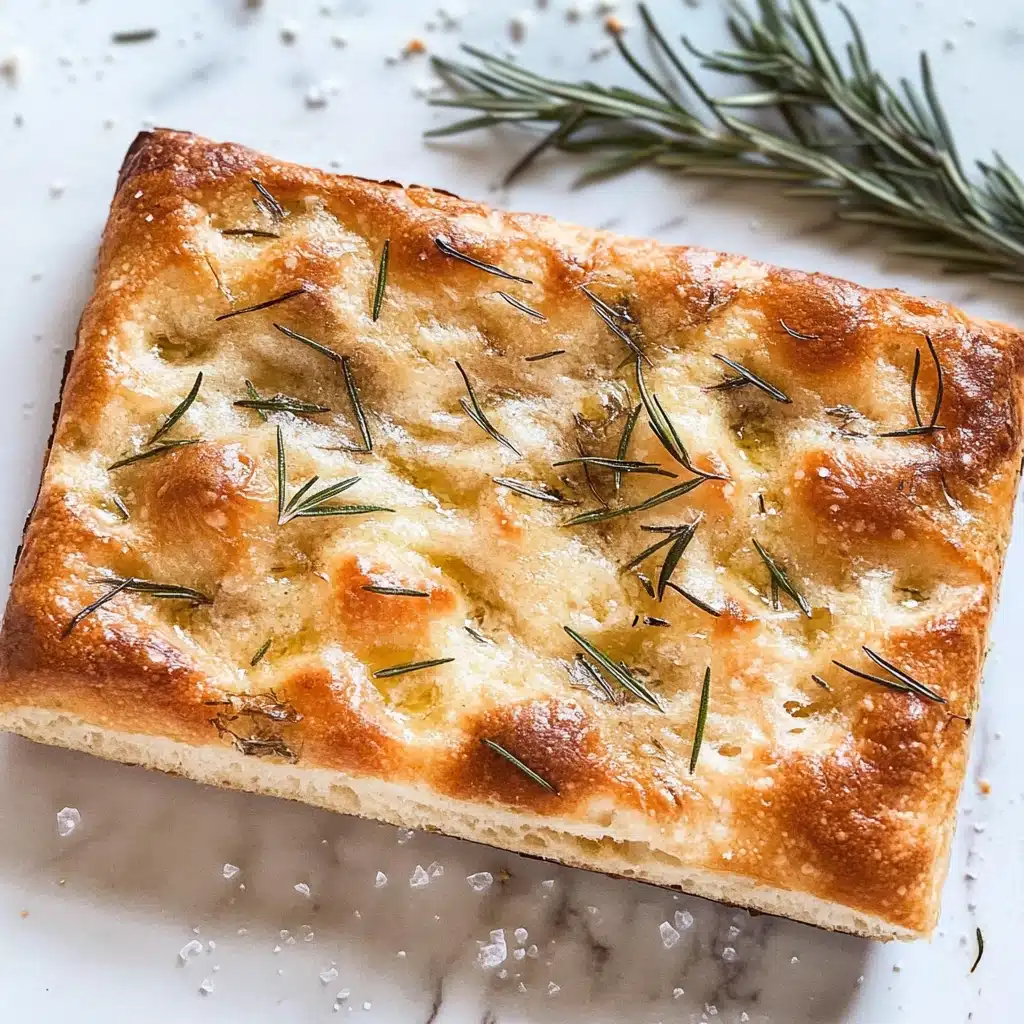
Ingredients You’ll Need
The magic of Dimpled Rosemary Focaccia lies in a handful of pantry staples, each chosen for flavor, structure, and that signature golden crust. Let’s take a moment to appreciate the role each one plays!
- Lukewarm water: The perfect temperature helps “wake up” the yeast and create that cloud-like crumb we’re after.
- Instant dry yeast: Instant yeast is quick and no-fuss; it gives the bread its rise and that lovely airy texture.
- Sugar: Just enough to feed the yeast—don’t worry, your bread won’t taste sweet!
- All-purpose or bread flour: Either flour works beautifully—bread flour yields a chewier bite, while AP flour stays ultra-tender.
- Salt: Essential for flavor, both in the dough and the crunchy, salty topping.
- Extra virgin olive oil: This is what makes focaccia, well, focaccia! It delivers richness, crisp edges, and beautiful color.
- Rosemary (fresh or dried): The hero aromatic—fresh rosemary looks and tastes especially vibrant, but dried will absolutely still shine.
- Flaky salt (optional): A final sprinkle gives every bite a satisfying pop of savory crunch.
Variations
One of the best things about homemade Dimpled Rosemary Focaccia is how easy it is to adapt. With just a few tweaks, you can make this bread your own, based on what you love or what’s lingering in your pantry!
- Olive & Sun-Dried Tomato: Scatter pitted olives and chopped sun-dried tomatoes before baking for a Mediterranean punch.
- Caramelized Onion: Top your dough with sweet, slow-cooked onions for an umami-rich twist that’s a hit with everyone.
- Garlic & Herb: Add minced garlic and swap in thyme or oregano if you don’t have rosemary on hand.
- Vegan Option: This recipe is naturally vegan as written—just double-check your choice of toppings if you want to keep it that way!
How to Make Dimpled Rosemary Focaccia
Step 1: Bloom the Yeast
Start by combining lukewarm water, instant dry yeast, and sugar in a small bowl. Give it a gentle whisk and set aside for just about 30 seconds. You’re looking for the yeast to dissolve and get a little foamy—this quick step ensures your focaccia rises tall and fluffy!
Step 2: Mix the Dough
In a large bowl, stir together your flour and salt. Pour in the dissolved yeast mixture and give everything a good mix with a sturdy wooden spoon. Once the dough looks wet and shaggy, drizzle in the olive oil and keep stirring until it’s fully incorporated—the mixture will be sticky, and that’s a good thing!
Step 3: Let the Dough Rise
Choose your proofing adventure! For same-day focaccia, cover the bowl and let it sit in a barely warm oven for about 1.5 to 2 hours, until doubled. If you want a deeper flavor, let it proof slowly in the fridge for up to 24 hours. Just remember to bring it to room temp before moving on if you go the slow route.
Step 4: Folding the Dough
After your dough has risen, it’s time for a quick folding session. Using a spoon, fold the dough from the outer edges to the center 20–40 times—this gently strengthens the dough and adds a little lift, all without kneading.
Step 5: Pan & Final Proof
Generously oil your baking pan, then drop in your dough. Use the back of two wet spoons to gently stretch the dough to the pan’s edges—it’s okay if it doesn’t reach all the way. Cover and let it proof a second time in a cozy spot for 45 minutes. The dough will get super puffy and bouncy!
Step 6: Add the Signature Dimples & Topping
Mix together olive oil, water, and salt. Dip your fingers in the mixture, then press deep dimples all over the top of the focaccia—this is what gives Dimpled Rosemary Focaccia its signature look and texture! Drizzle the rest of the oil blend over the bread, sprinkle on rosemary, and finish with flaky salt if you love a bit of crunch.
Step 7: Bake Until Golden
Preheat your oven to 450°F (230°C). Bake the focaccia on a medium-low rack for 20 to 25 minutes. Watch for a perfect golden-brown top and a slightly crisp, well-cooked bottom. Let it cool for at least five minutes before removing from the pan and cutting into generous squares. Then, try not to devour it all at once!
Pro Tips for Making Dimpled Rosemary Focaccia
- Temperature Matters: Use water that’s just warm to the touch—if it’s too hot, you’ll kill the yeast; too cold, and it won’t rise as enthusiastically.
- Generous Olive Oil: Don’t be shy about oiling the pan and dough—olive oil is key for that rich flavor and a crackly crust!
- Deep, Dramatic Dimples: Use your whole finger to press down—those little pools for olive oil and toppings make focaccia extra luscious.
- Proofing Patience: Give the dough time to get really airy and bubbly before you bake for the fluffiest results.
How to Serve Dimpled Rosemary Focaccia
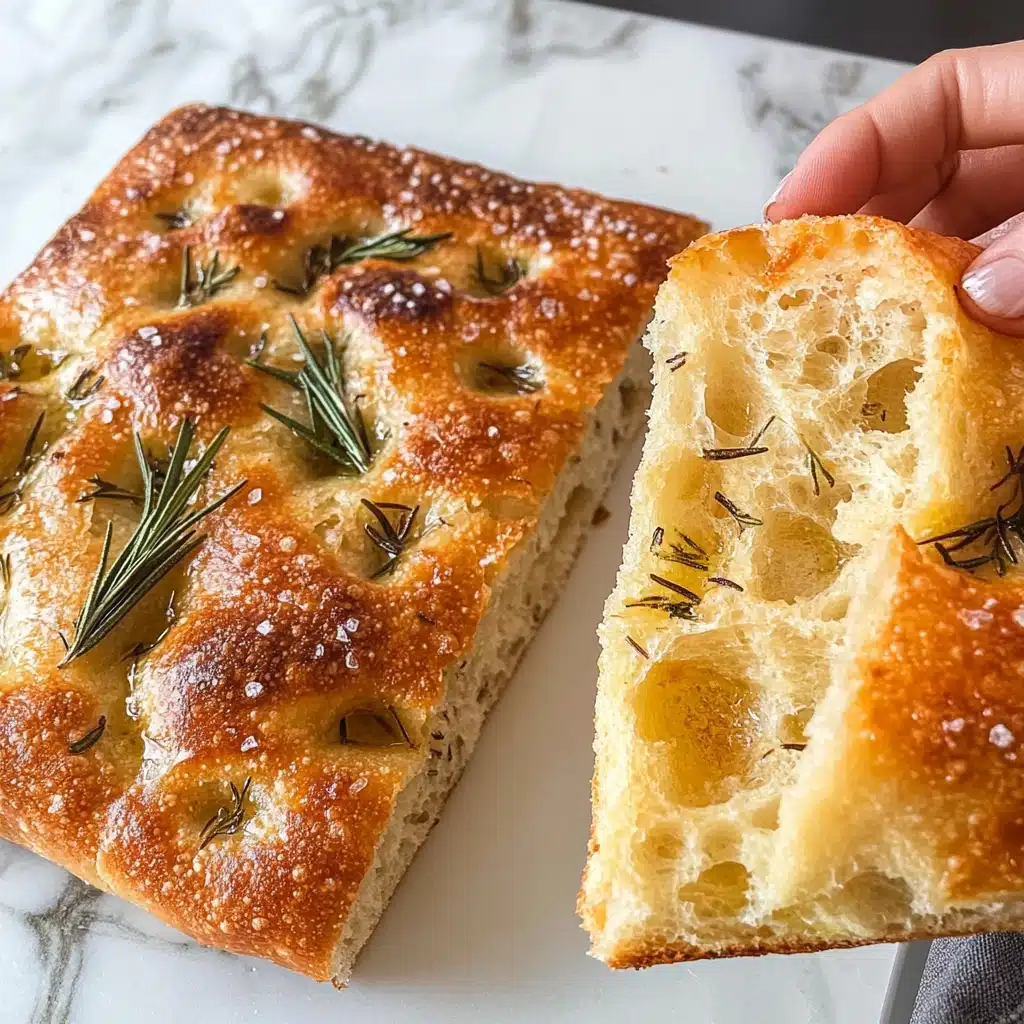
Garnishes
A sprinkle of flaky sea salt and a finishing drizzle of high-quality olive oil make every bite of Dimpled Rosemary Focaccia a little more special. If you want to get extra fancy, try shaving a bit of Parmesan or scattering over more fresh rosemary leaves just before serving.
Side Dishes
Dimpled Rosemary Focaccia is fabulously versatile—it’s dreamy alongside a bowl of warm soup, perfect for scooping up dips like hummus, or served with marinated olives and antipasti. It’s also the sandwich bread upgrade you didn’t know you needed!
Creative Ways to Present
For gatherings, slice the focaccia into strips or cubes and serve with infused oils for dipping. If you want a show-stopper, bake the dough in a round pan, then scatter edible flowers or colored sea salts for a bit of visual drama before baking. It’s always a conversation starter!
Make Ahead and Storage
Storing Leftovers
If you find yourself with leftover Dimpled Rosemary Focaccia (lucky you!), keep it wrapped in parchment followed by foil at room temperature for up to two days. This keeps the crust from getting too soft while maintaining moisture.
Freezing
Focaccia freezes beautifully! Let it cool completely, then wrap tightly in plastic and stash in a zipped freezer bag. You can freeze individual portions or the whole loaf for up to three months—just thaw at room temperature or gently reheat from frozen.
Reheating
To revive that fresh-baked warmth, pop squares of focaccia in a 350°F (175°C) oven for about 6 minutes, or until toasty. A quick spritz of water before reheating can bring back a fabulous crust. Avoid microwaving, as it tends to make bread rubbery.
FAQs
-
Can I use active dry yeast instead of instant?
Absolutely! Just dissolve the active dry yeast in lukewarm water with the sugar for about 5 minutes until it’s foamy before adding it to your flour. Your Dimpled Rosemary Focaccia will still rise beautifully.
-
How do I know when it’s finished proofing?
Your dough should be noticeably puffed and at least doubled in size. When you poke it gently, the indentation should bounce back slowly—this means it’s full of airy bubbles and ready for baking!
-
Can I make Dimpled Rosemary Focaccia gluten-free?
Yes! Use a high-quality gluten-free all-purpose flour blend formulated for bread baking. Results will vary by brand, so check texture and hydration as you mix, but you can absolutely enjoy a gluten-free version at home.
-
Why does my focaccia sometimes turn out dense?
Usually, it means there wasn’t enough time for proofing, or the yeast was expired. Be sure to give your dough plenty of rising time in a warm spot, and check that your yeast is fresh for the lift this bread deserves!
Final Thoughts
If you’re looking for a joyful kitchen project that delivers incredible aroma and flavor, you simply have to try making Dimpled Rosemary Focaccia. It’s easier than you think, and the payoff—freshly baked, golden bread you created from scratch—is so satisfying. I hope this recipe brings as much happiness to your table as it does to mine. Happy baking!
Print
Classic Rosemary Focaccia Recipe
- Prep Time: 15 minutes
- Cook Time: 20 minutes
- Total Time: 2 hours 35 minutes
- Yield: 12 pieces
- Category: Bread
- Method: Baking
- Cuisine: Italian
- Diet: Vegetarian
Description
Learn how to make delicious Focaccia bread at home with this easy-to-follow recipe. Perfect for serving as a side or as the star of your meal.
Ingredients
FOR THE DOUGH
- 1 3/4 cups lukewarm water
- 2 teaspoons instant dry yeast
- 2 teaspoons sugar
- 4 cups all-purpose flour or bread flour
- 3 teaspoons salt
- 2 tablespoons extra virgin olive oil + 2 tablespoons to grease the baking pan or you can substitute parchment paper
FOR THE TOPPING
- 2 tablespoons extra virgin olive oil
- 3 tablespoons water
- 1/2 teaspoon salt + flaky salt optional
- 3 pinches rosemary optional to taste; fresh or dry
Instructions
- BLOOM THE YEAST: Measure ingredients for the dough. Then add lukewarm water, instant dry yeast, and sugar to a small bowl, whisk and set aside for 30 seconds. Yeast must fully dissolve. If it doesn’t, start again with fresh yeast.
- MAKE THE DOUGH: To a large mixing bowl, add and stir flour and salt. Now add the yeast-water mixture and stir with a sturdy wooden spoon until you have a wet, sticky dough (about 1 minute). Add extra virgin olive oil and stir one more minute until incorporated.
- Choose quick or slow proofing.
- QUICK PROOFING (1.5 to 2 hours): Cover the bowl with a damp cloth or plastic wrap, leaving enough space between the dough and the cloth. Put the bowl in a slightly warm oven for 1.5 to 2 hours or until double in volume. To get the oven warm, turn it on for 60 seconds then turn it off. Don’t leave it on.
- SLOW PROOFING (8 to 24 hours): Cover the bowl with plastic wrap and let the dough mature slowly in the fridge for 8 to 24 hours. When ready, remove from the fridge and leave it at room temperature for 2 to 3 hours before the next step.
- FOLDING: After proofing, fold the dough with a spoon over itself 20 to 40 times (it takes 30 – 60 seconds) from the outside to the inside while still in the bowl. Stop folding once the dough gets tight; you’ll feel it.
- FINAL PROOFING: Grease your baking pan with 2 to 3 tablespoons of olive oil and drop the dough into the pan. Spread the dough with the back of two spoons until most of the baking pan is covered. Wet the spoons with water to prevent them from sticking. It’s okay if the focaccia gets a little wet on top. Cover with a damp cloth/baking tray/or plastic wrap. Proof a second time in a warm corner of your kitchen for 45 minutes.
- TOPPING: In a small bowl, mix 2 tablespoons extra virgin olive oil, 3 tablespoons water, and ½ teaspoon salt until dissolved. Dip fingers in it, then press dimples across the focaccia. Pour the remaining oil-water mixture over the dough, letting it seep into the dimples. Optionally, add 3 pinches rosemary and sprinkle with flaky salt.
- BAKE: When the oven reaches 450°F or 230°C, place the focaccia on the medium-low rack and bake it for 20 to 25 minutes. Baking times vary. If your focaccia is thick, it’ll take closer to 25 minutes. If it’s thin, it’ll take closer to 20 minutes. It should be golden brown and crispy on top, well-cooked on the bottom, and still soft inside. Let it cool down for at least 5 minutes before removing it from the pan, cutting it, and serving it.
Nutrition
- Serving Size: 1 piece

